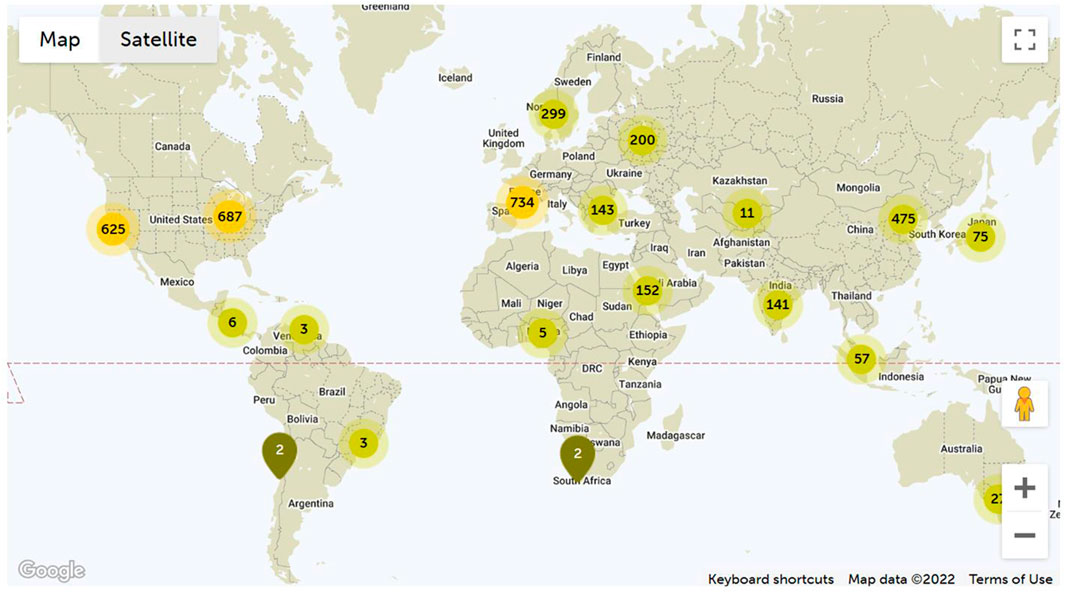- 1Department of Electronic and Electrical Engineering, University College London, London, United Kingdom
- 2School of Engineering, The University of Edinburgh, Edinburgh, United Kingdom
- 3Electrical Engineering Division, Department of Engineering, University of Cambridge, Cambridge, United Kingdom
- 4HUB of Intelligent Neuro-engineering, CREATe, Faculty of Medical Sciences, University College London, London, United Kingdom
- 5School of Integrated Circuit Science and Engineering Beihang University, Beijing, China
- 6School of Instrumentation and Optoelectronic Engineering, Beihang University, Beijing, China
Editorial on the Research Topic
Wearable and Implantable Electronics for the Next Generation of Human-Machine Interactive Devices
This research topic highlights emerging technologies related to Human-Machine Interface (HMI), such as machine learning, neural interfaces, and other novel electronics in the form of wearable and implantable devices that can create a seamless link between humans and intelligent systems. With over 25 authors’ contribution, five Original Research articles and one Mini Review has been published on this topic. The topic has attracted ample attention. As shown in Figure 1 below, at the time of writing, there have been 4,437 total views 2,449 article views, and 310 article downloads recorded across the globe.
The published articles cover several topics and can be combined in three broad categories, with their findings and highlights listed as follows:
Wearable and Assistive HMI Systems:
Son and Weiland proposes a new wearable system that can safely guide blind or visually impaired (BVI) individuals through crosswalks. Compared to prior studies that only detect crosswalks or classify signs, the light-weighted wearable device can localize BVI users into the map with the prior maps approach, while providing verbal instructions assisting road crossing in real-time. With brief training, all three BVI participants could use the system to navigate a crosswalk safely and successfully.
Yang et al. presents BodyWire for human body communication (HBC). Unlike previous works, where communication is between Earth ground devices and wearables, BodyWire connects two wearable devices using an electro-quasistatic technique. Using the HBC prototype developed, through-body interhuman channel loss is characterized for the first time. In addition, the smallest FOM factor HBC is also demonstrated.
Chen et al. Cleaning robots could be the new workforce in the labour-intensive janitorial industry. Through a video-based survey from 117 participants, this study investigates humans’ reaction and acceptance level to potentially large-scale commercial-grade cleaning robots operating nearby. It provides insight into future robot designs for the next generation of cleaning robots that can harmoniously coexist with surrounding humans.
Biomedical Instrumentation for HMI:
Liu et al. Due to safety reasons, charge balancing is critical to the neural stimulator. The proposed design uses a synchronous charge detection that features a current splitter and a short-time pulse insertion module to output ultra-small compensation current towards charge balancing. The measurement has shown that with the proposed technique, the residual charge remaining on the electrode-tissue interface is only 0.95 nC.
Gao et al. The number of wireless sensor nodes (WSNs) has increased significantly due to the industrialization of wearable electronics. Conventional battery-based powered systems no longer satisfy the requirement of large-scale WSNs in terms of battery life, leading to increasing demand for energy harvesting (EH) techniques. This mini-review article summarizes the current state-of-the-art EH techniques and future trends in the EH research.
Flexible Material for Wearables:
Khan et al. presents a comparative study on the treatment techniques for fine-tuning the surface of different polymeric substrates. On top of the two conventional methods, namely the oxygen plasma and ultraviolet ozone techniques, a new method based on surface cleaning liquid is also evaluated. Results show that the new process is advantageous in various aspects.
To conclude, we, the topics editors, would like to take this opportunity to thank all the reviewers for their invaluable effort and time devoted to our interactive review process and the Frontiers in Electronics team for their advice and support. We also want to thank George Smith from the Frontiers in Electronics team for his outstanding administrative assistance along the way. Finally, we wish you a fruitful and prosperous 2022!
Author Contributions
All authors listed have made a substantial, direct, and intellectual contribution to the work and approved it for publication.
Conflict of Interest
The authors declare that the research was conducted in the absence of any commercial or financial relationships that could be construed as a potential conflict of interest.
Publisher’s Note
All claims expressed in this article are solely those of the authors and do not necessarily represent those of their affiliated organizations, or those of the publisher, the editors and the reviewers. Any product that may be evaluated in this article, or claim that may be made by its manufacturer, is not guaranteed or endorsed by the publisher.
Keywords: human-machine interaction(HMI), wearable HMI for health care, instrumentation for HMI, wearable and assistive HMI systems, biomedical instrumentation for HMI, flexible material for wearables
Citation: Wu Y, Wang S, Shen B, Zhao H, Lu H and Gao S (2022) Editorial: Wearable and Implantable Electronics for the next Generation of Human-Machine Interactive Devices. Front. Electron. 3:935289. doi: 10.3389/felec.2022.935289
Received: 03 May 2022; Accepted: 30 May 2022;
Published: 15 June 2022.
Edited and reviewed by:
Edward Sazonov, University of Alabama, United StatesCopyright © 2022 Wu, Wang, Shen, Zhao, Lu and Gao. This is an open-access article distributed under the terms of the Creative Commons Attribution License (CC BY). The use, distribution or reproduction in other forums is permitted, provided the original author(s) and the copyright owner(s) are credited and that the original publication in this journal is cited, in accordance with accepted academic practice. No use, distribution or reproduction is permitted which does not comply with these terms.
*Correspondence: Yu Wu, eXUud3UuMDlAdWNsLmFjLnVr; Shuo Gao, c2h1b19nYW9AYnVhYS5lZHUuY24=
 Yu Wu
Yu Wu Shiwei Wang
Shiwei Wang Boyang Shen
Boyang Shen Hubin Zhao
Hubin Zhao Haichang Lu
Haichang Lu Shuo Gao
Shuo Gao